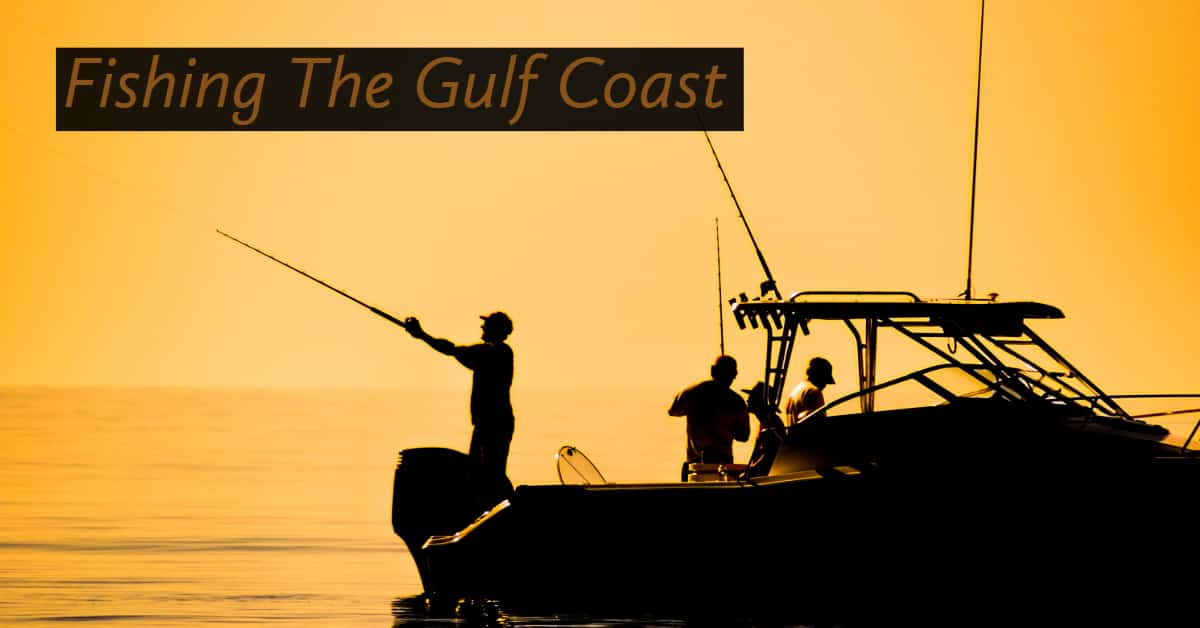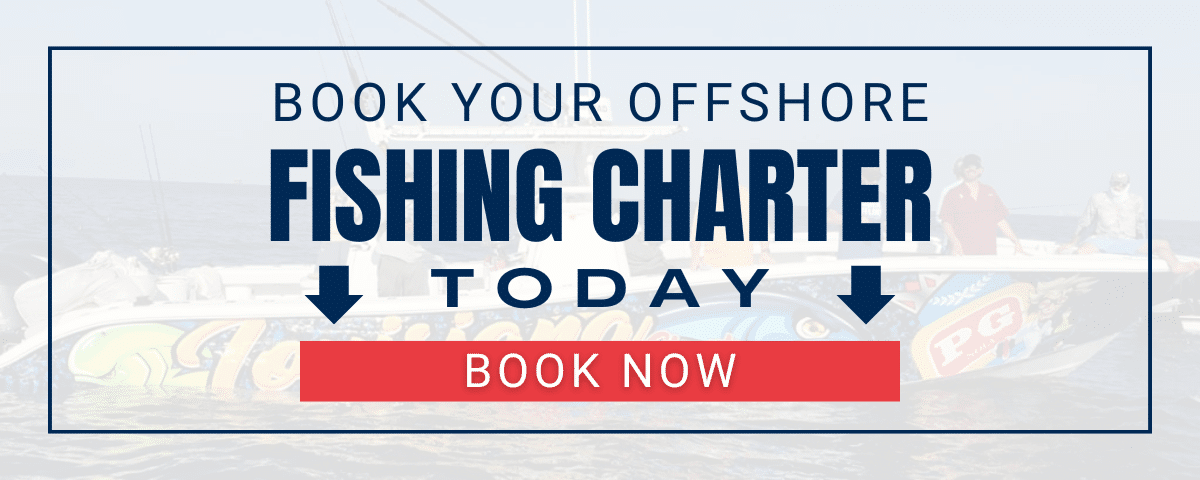Louisiana Gulf Coast And The Fishing It Offers
With over 3,000 miles of coastline, Louisiana’s waters are naturally teeming with fish. The state also has one of the most generous catch limits in the nation, which adds to its appeal as a sport fishing destination.
Perhaps best of all is that there is no one “season” for deep sea fishing in Louisiana. The mild climate makes fishing possible throughout the year, even during the coldest days of winter!
You can look forward to possibly catching many types of fish in the Gulf of Mexico, while on a Louisiana charter fishing expedition, including lemon fish, grouper, mackerel, yellowfin tuna, blackfin tuna, red snapper, speckled trout, and cobia. Whether you’re planning a one-day adventure or a multi-day excursion fishing in the Gulf, you won’t come back home empty-handed.
Fishing Through The Seasons
The types of fish you’ll find when Louisiana offshore fishing is largely influenced by the seasons. From January through March, the coastal waters are filled with large wahoo and yellowfin tuna. These species tend to be closer to the shoreline at this time of year, as they gravitate to the warmer waters in the shallows.
You may be able to fish for both species less than 20 miles offshore. Other species of fish that appear this time of year are redfish and speckled trout. They are normally found along the entire coastline.
If you’re looking to catch prize-winning speckled trout, consider planning your trip during mid-late spring. This is the species’ spawning season, and it is also historically the time of year when fishermen report the largest speckled trout catches. Redfish also start to appear in April, and they are relatively abundant through June.
With the arrival of more fish through spring, summer is a prime time to take a Louisiana charter fishing trip. The longer days of summer also means that this season has the longest window of time for fishing.
The warmer air and water temperatures invite dozens of species, which makes the coastline prime real estate for big fish. Yellowfin tuna, amberjack, red snapper, cobia, and mangrove snapper are just several species that reside in the coastal waters during summer.
A real treat, however, is Blue Marlin. Blue Marlin thrive along the southeastern shore, where they can reach tremendous sizes. Many fishermen have reported regularly catching Blue Marlin that weigh 100 pounds or more!
Learn the differences of swordfish vs marlin.
Fall is the time to start packing up your gear for the year in many places around the country, but not here. Speckled trout are still active in the fall. They’re not quite as big as they are in the summer, but they are especially delicious this time of year.
Redfish are also prevalent in the cooler months of the year. This is also a good time to try your hand at getting a trophy yellowfin tuna, as they are notoriously large from October through December. During this time of year, it’s not unheard of for anglers to catch yellowfin tuna that weigh over 150 pounds!
To make sure you are fishing in the right places to get the size and type of fish you want, you are strongly encouraged to go with a Louisiana charter fishing guide. A guide will know the current air and water temperatures, and in turn where to find the best fish. He or she also knows the changing feeding habits of the fish in the area, which also makes it easier to find the best catches.
Choosing Your Bait And Location
As you plan your trip, be aware that where you go to fish and the type of bait you use can make a difference in the success of your Louisiana offshore fishing excursion. A popular place to go for prime Gulf of Mexico deep sea fishing Louisiana is around the offshore oil rigs. Oil rigs may not be the first places that come to mind when you’re looking for fish, but they actually provide prime habitat for many species of fish.
The structure of the oil rigs naturally creates hiding spots for smaller fish and crustaceans. These smaller fish provide food for larger fish, and they’re also great bait fish. A unique combination of bottom feeder fish and fish that live in the mid-upper levels of the sea convene along oil rigs to feed on the smaller fish and shellfish. If you’re after dolphin, tuna, marlin, and wahoo, oil rigs are a good place to look.
Oil platforms tend to attract speckled trout and redfish, as they are located a little closer to shore. As for bait, the small fish that live around the oil rigs are a natural choice for many fishermen. Bright, vibrantly colored lures are another good option, as they’re visible and attract both freshwater and saltwater fish.
You can also use lures infused with salt and other salient scents for bait, as it generates a powerful scent that fish don’t ignore. Softer baits that have moving parts (such as tails and fins) are another good choice for attracting fish.
Final Tips and Suggestions
Whether you’ve got your eye on a fishing prize or you just want to show off to your friends, there are some tips and tricks for making sure your Gulf of Mexico deep sea fishing Louisiana experience is as rewarding as possible in all seasons.
If you’re fishing in the wintertime, look for fish in deeper water. Fish typically move to shallower waters when the temperature rises. Conversely, they will move to deeper waters when the temperature drops. Another winter fishing tip is to slow down your retrieve a bit and try not to move the bait around erratically.
Remember to set the hook, since strikes may feel soft. Since the water temperature is generally warmer in moving water, you’ll be in a better position to find fish there in the wintertime. Year-round, be sure to bring a license with you. Licenses are available for even short, day-long expeditions, but you’ll need to have one regardless of how long your trip is.
Sunscreen, even in winter, is also good to pack. Keeping in mind that the weather can change, however, it’s a good idea to bring rain gear, too. Insect repellent and water or other beverages are other year-round necessities. Finally, don’t forget to bring a camera or phone so that you capture your best moments out on the boat!




